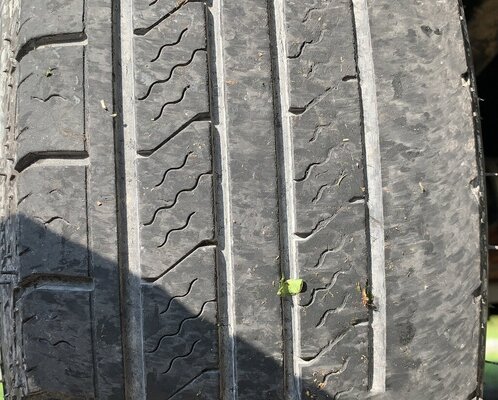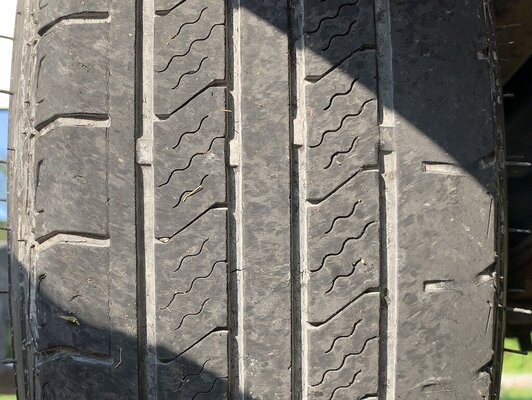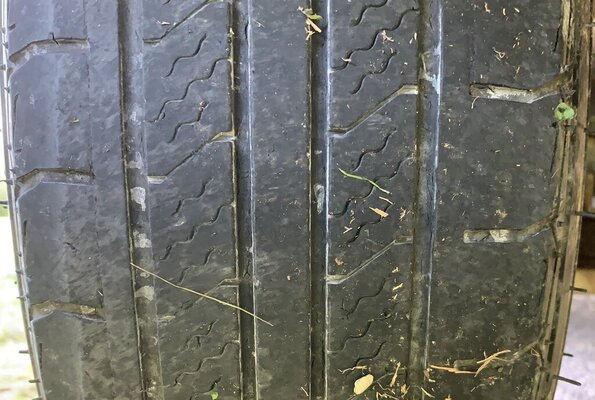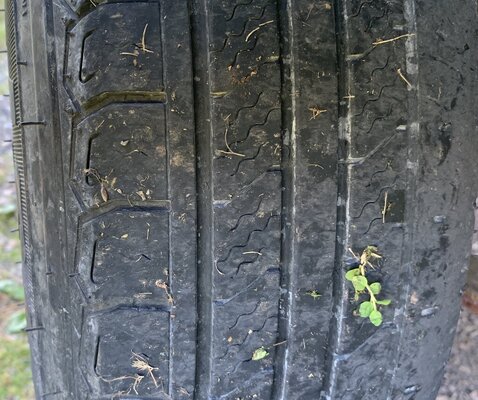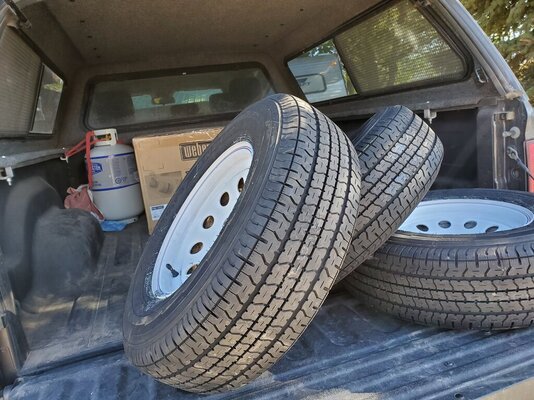Telemark46
Well-known member
We have a 2014 Keystone Passport Ultralite and we're currently in Nova Scotia, ca 3,000 miles from home. I had the bearings repacked and found out the tires are wearing worse than I had realized, mostly on the inside. There's a little excess wear on the outside edge, suggesting they were underinflated. Our trailer has "spread" axles (spaced widely) and I have heard that scrubbing is worse in turns with those. However, I have not heard that scrubbing causes such uneven wear. Any thoughts on that?
The other cause I have heard of for excessive inside wear is bent axles, a most unpleasant thought. The tires are just over two years old with about 25,000 miles on them. The miles include a trip to Alaska and a trip to the Maritime Provinces including Newfoundland. Both those trips included plenty of bad roads of all descriptions! I tried to slow down appropriately, but sometimes the bad stuff snuck up on me, like coming down a 17% grade and finding a section of pavement missing, with a very bad transition! Although I didn't break the frame or such, I wonder if I could have overloaded the axles, reversing the intended arc. I hope that's not the cause. Thanks in advance for your helpful (I'm sure) suggestions.
Either way, I will be buying tires, moving from LR C to LR D (and weighing advice about inflation, max or not) and perhaps from 205/75R14 to 215s. The inside edge is to the right in each photo.
The other cause I have heard of for excessive inside wear is bent axles, a most unpleasant thought. The tires are just over two years old with about 25,000 miles on them. The miles include a trip to Alaska and a trip to the Maritime Provinces including Newfoundland. Both those trips included plenty of bad roads of all descriptions! I tried to slow down appropriately, but sometimes the bad stuff snuck up on me, like coming down a 17% grade and finding a section of pavement missing, with a very bad transition! Although I didn't break the frame or such, I wonder if I could have overloaded the axles, reversing the intended arc. I hope that's not the cause. Thanks in advance for your helpful (I'm sure) suggestions.
Either way, I will be buying tires, moving from LR C to LR D (and weighing advice about inflation, max or not) and perhaps from 205/75R14 to 215s. The inside edge is to the right in each photo.

